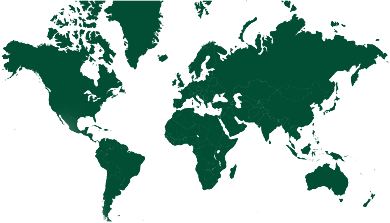Software
2020 • Global Water Pathogen Project (GWPP) Treatment Plant Sketcher tool
The Treatment Plant Sketcher tool is an interactive software application designed to model wastewater and fecal sludge treatment systems with a focus on pathogen reduction. The tool allows users to create a visual "sketch" of a treatment system, define treatment units and operational parameters, and estimate the proportion of pathogens removed at each stage. By predicting pathogen fate in both liquid and solid treatment streams, the tool supports decision-making in sanitation system design, operation, and evaluation. Although primarily focused on pathogen reduction, it can also be applied to resource recovery planning, particularly for biosolids management and treated water reuse.
Recovered Materials & Products
Waste Streams
Faecal sludge
Wastewater
Wastewater sludge
Confirmed countries
Germany


What is this tool intended for?
The Treatment Plant Sketcher tool is designed to support the planning and optimization of wastewater and fecal sludge treatment systems by simulating pathogen removal across different treatment processes. The tool is useful for researchers, engineers, and sanitation professionals seeking to design effective treatment systems that minimize health risks associated with pathogens in wastewater and biosolids.
How does this tool work?
The tool operates by allowing users to construct a "sketch" of a treatment system using an interactive interface. Users define key components such as the influent source, treatment units, and end-use or disposal pathways. The tool then processes the inputs to predict pathogen reductions for bacteria, viruses, protozoa, and helminths at each stage. The graphical interface provides real-time visualizations of pathogen concentrations in liquid effluent and biosolids, enabling users to assess the effectiveness of different treatment configurations. Users can save their system designs in JSON format for future modifications or analysis.
Who might use this tool and with which types of stakeholders?
The tool is intended for sanitation professionals, engineers, and researchers involved in wastewater and faecal sludge management. It can also support policy-makers and NGOs working on sanitation infrastructure projects, particularly in developing regions where pathogen reduction is a critical concern. The ability to visually model treatment processes makes it useful for training and educational purposes as well.
What stages of a process can this tool support?
The tool is most useful in the planning and design phases of sanitation infrastructure projects. It can help assess the potential effectiveness of different treatment technologies before implementation. It can also be used for performance evaluation by comparing predicted pathogen reduction to actual treatment plant monitoring data.
What skills, capabilities, and resources are required to use this tool?
The tool is designed to be user-friendly and does not require advanced technical expertise. However, users should have a basic understanding of wastewater and fecal sludge treatment processes, as well as knowledge of pathogen fate in sanitation systems. Access to relevant treatment system data, such as flow rates and operational parameters, enhances the accuracy of model predictions.
Where can this tool be used?
The tool is applicable in a wide range of settings, including urban and rural wastewater treatment plants, faecal sludge management systems, and decentralized sanitation projects. It is particularly useful in regions where reducing pathogen risks in sanitation is a priority.
Get the Tool
The tool can be accessed at the link below.
https://www.waterpathogens.org/tools/treatment-plant-sketcher-tool
Learn more
The tool is associated with the Global Water Pathogen Project’s Knowledge to Practice (GWPP K2P) initiative and its online book Sanitation and Disease in the 21st Century. Learn more at the link below.
https://www.waterpathogens.org/
Technologies
Themes
Monitoring, Evaluation and Learning
Environmental Impact Assessment
Health Impact Assessment